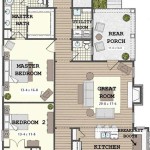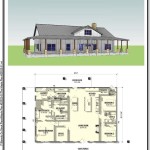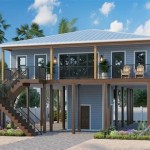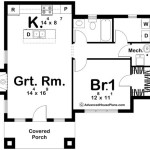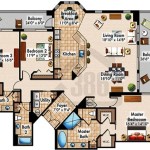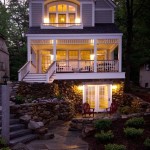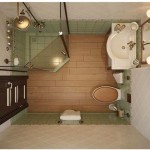Small Cabin Plans With Loft: Maximizing Space and Functionality
The allure of a small cabin often lies in its simplicity, affordability, and connection with nature. However, limited square footage demands careful planning to ensure comfortable living. Incorporating a loft into the cabin design is a popular and effective strategy for expanding usable space without significantly increasing the building's footprint. Small cabin plans with lofts offer a versatile solution for bedrooms, storage, or recreational areas, making them ideal for weekend retreats, vacation homes, or even full-time residences for minimalist individuals or couples.
Choosing the right small cabin plan with a loft requires a thorough evaluation of needs, budget, and site conditions. Numerous designs are available, ranging from basic, one-room structures with a simple sleeping loft to more elaborate cabins with multiple rooms and a larger, more accessible loft area. This article explores key aspects of small cabin plans featuring lofts, providing insights into design considerations, construction methods, and potential benefits.
Understanding the Advantages of Loft Spaces in Small Cabins
The primary advantage of incorporating a loft into a small cabin is the efficient utilization of vertical space. By raising the roof and creating a second level, the overall living area is substantially increased without expanding the ground-level foundation. This is particularly beneficial on properties with building restrictions or limited land availability. A loft allows for the separation of living and sleeping areas, creating a more defined sense of space within a compact structure.
Loft spaces can be adapted to various uses, depending on the homeowner's needs and preferences. They are commonly used as bedrooms, providing a private and cozy sleeping area. A loft can also serve as a home office, a reading nook, a children's playroom, or simply as extra storage space. The versatility of the loft makes it a valuable asset in a small cabin, maximizing its functionality and comfort.
Beyond the practical advantages, a loft can also add architectural interest and aesthetic appeal to a small cabin. Exposed beams, natural wood finishes, and strategically placed windows can create a warm and inviting atmosphere. The elevated vantage point from the loft often provides enhanced views of the surrounding landscape, further enhancing the cabin's connection with nature.
Key Design Considerations for Small Cabin Plans with Lofts
Designing a small cabin with a loft requires careful consideration of several factors to ensure a functional, comfortable, and safe living space. Headroom is a crucial aspect, especially in the loft area. Building codes typically specify minimum headroom requirements for habitable spaces, and these must be met to ensure compliance and avoid discomfort. Adequate headroom allows for comfortable movement and prevents a cramped or claustrophobic feeling.
Access to the loft is another important consideration. Ladders are a common and space-saving option, but they may not be suitable for everyone, particularly those with mobility issues or young children. Stairs provide a more comfortable and safer means of access, but they require more floor space. Spiral staircases offer a compromise, providing a relatively compact footprint while still offering a more gradual ascent than a ladder.
Natural light and ventilation are essential for creating a bright and airy atmosphere in the loft. Windows should be strategically placed to maximize sunlight and airflow. Skylights can also be used to bring natural light into the loft, particularly in areas with limited wall space. Proper ventilation is crucial for preventing moisture buildup and ensuring a comfortable indoor environment.
Insulation plays a vital role in maintaining a comfortable temperature in the loft, especially in extreme climates. Since heat rises, the loft is often warmer than the lower level. Adequate insulation in the roof and walls helps to regulate the temperature and reduce energy consumption. The loft's insulation should be carefully considered when choosing the most effective method to heat and cool the cabin.
The structural integrity of the cabin is paramount. The loft must be designed to support the intended load, including furniture, occupants, and stored items. Consulting with a structural engineer or experienced builder is essential to ensure that the loft is structurally sound and meets all relevant building codes. The roof pitch and the supporting beams need to be adequately sized as well.
Exploring Different Types of Small Cabin Loft Designs
The design of the loft can vary significantly, depending on the overall cabin plan and the intended use of the space. A simple sleeping loft typically consists of a raised platform with enough space for a bed and a small bedside table. It is often accessed by a ladder and may have limited headroom. This type of loft is ideal for maximizing space in a small cabin and providing a private sleeping area.
A more spacious and functional loft can be created by increasing the roof pitch and incorporating dormer windows. Dormers add headroom and natural light, making the loft feel more like a traditional room. This type of loft can accommodate a larger bed, a seating area, or even a small desk, making it suitable for use as a home office or a guest bedroom.
A partial loft, which covers only a portion of the cabin's footprint, can be used to create a more open and airy feel. This type of loft allows for a double-height ceiling in certain areas of the cabin, creating a dramatic and visually appealing effect. A partial loft can be used as a reading nook, a meditation space, or simply as a decorative element.
Consider the overall style of the cabin when designing the loft. A rustic cabin may feature exposed beams, natural wood finishes, and a simple ladder access. A more modern cabin may incorporate clean lines, minimalist design, and a spiral staircase. The loft's design should complement the overall aesthetic of the cabin and create a cohesive and harmonious living space.
Finally, examine energy-efficient loft design practices that incorporate passive solar heating or cooling techniques that are implemented in the loft of a small cabin. These types of practices save energy use by strategically using natural sources to heat, cool, and light the living space.
When it is time to design a small cabin plan and loft, it is important to check all local building codes and regulations regarding the height of the ceiling, size of windows, and staircase requirements. A qualified builder or architect is a valuable resource that can help ensure the new build adheres to all legal requirements.
Selecting the correct small cabin plan that includes a loft requires a lot of due diligence and attention to detail, a clear understanding of the advantages of the design, and a thorough review of all key design parameters. Selecting a small cabin plan that includes a loft is an important decision that needs to be reviewed carefully.

Small Cabin Designs With Loft Floor Plans House Plan

13 Best Small Cabin Plans With Cost To Build Tiny Building A

Small Cabin House Plans With Loft And Porch For Fall Houseplans Blog Com

Small Cabin Designs With Loft Floor Plans
Small Cabin House Plans With Loft And Porch For Fall Houseplans Blog Com

13 Best Small Cabin Plans With Cost To Build Craft Mart

Small Cabin Plan With Loft House Plans

Small Cabin Loft Diy Build Plans 12 X 20 Tiny House Blueprint

Small Cottage Floor Plan With Loft Designs House Plans

10 Unique Plans Of Tiny Homes And Cabins With Loft Craft Mart

